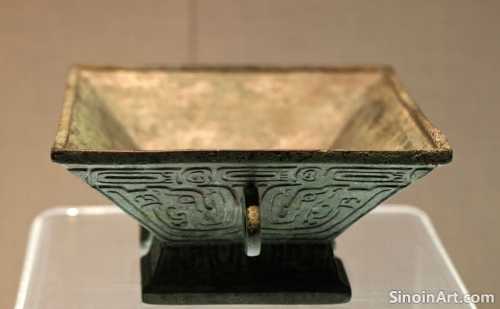The Evolution of Bronze Mirror Design: From Early Simplicity to Ornate Patterns and Narrative Scenes
|
The design of bronze mirrors in ancient China underwent a remarkable evolution over time, progressing from simple, unadorned forms to more elaborate designs that featured intricate patterns, complex symbolism, and narrative scenes. The study of these changes reveals much about the artistic, technological, and cultural changes that occurred across different historical periods. The evolution of the design of these objects reflects changes in both technique and also social preferences.  Early bronze mirrors were often small and plain, with simple geometric patterns and limited decorative elements, reflecting a more utilitarian function. The earliest designs reflect a focus on practicality over artistry, although even the simplest mirrors reflect an underlying understanding of geometric principles.  Later bronze mirrors often incorporated intricate designs, including detailed representations of mythological creatures, scenes from daily life, and complex geometric patterns. The increased level of decorative complexity is a testament to the changing artistic approaches of the time. The inclusion of more complex designs also helped to highlight the skill of the metalworkers and the aesthetic preferences of the era.  The use of inscriptions and the inclusion of small images on bronze mirrors also helped to communicate specific messages, and also helped to enhance their overall appeal as both personal objects and also as works of art. The interplay of the written word and the visual design helped to enhance their overall power and appeal. The study of the evolution of bronze mirror design provides valuable insights into the artistic tastes, cultural beliefs, and technological progress of ancient China, highlighting the intricate relationship between function, artistry, and the social context in which these pieces were produced. The careful study of these objects helps to illuminate the history, culture, and artistic practices of the time. |
Tag : bronze mirror design, Chinese art, ancient patterns, decorative styles, mirror evolution
Related information
- The Inscribed Bronzes of the Zhou Dynasty: Narratives of History and Power
- Bronze Ware and the Development of Ancient Chinese Calendar Systems: Marking Time and Ritual Cycles
- The Use of Bronze in Ancient Chinese Astronomical Observatories: Instruments and Knowledge
- Bronze Ware and the Development of Ancient Chinese Mathematics: Measurement and Calculation
- The Preservation of Bronze Artifacts: Understanding the Chemistry of Corrosion and Deterioration
This article explores the inscribed bronzes of the Zhou Dynasty, emphasizing their importance as historical records, their role in establishing lineage and political legitimacy, and their significance in the development of Chinese writing.
This article explores the use of bronze in ancient Chinese calendar systems, highlighting its role in creating timekeeping devices like sundials, tracking the passage of time, and linking calendars to both agricultural and ritual cycles.
This article explores the use of bronze in ancient Chinese astronomical observatories, highlighting the creation of sighting devices, armillary spheres, and other instruments, and demonstrating how these objects facilitated astronomical observation and knowledge.
This article explores the use of bronze in ancient Chinese mathematics, highlighting its role in creating measuring instruments, illustrating mathematical principles, and revealing the connections between bronze, technology, and mathematical understanding.
This article explores the chemistry of bronze corrosion and deterioration, highlighting the scientific principles behind conservation efforts, and the methods and techniques used to stabilize and preserve these artifacts for future generations.